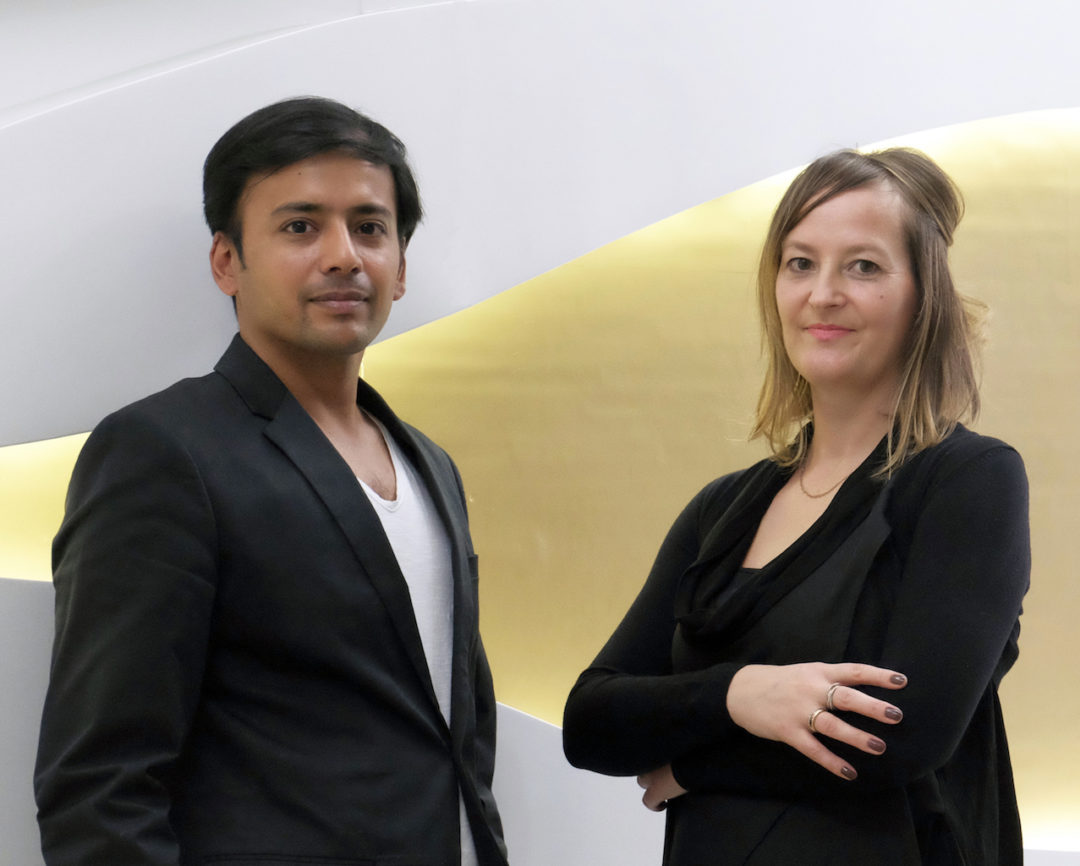Lately, India’s capital New Delhi has been in the news for its hazardous air pollution levels – over 20 times the limit of what the World Health Organization considers safe. Unsurprisingly, it has earned the rather unfavourable distinction of being the world’s most polluted city.

A toxic combination of pollutants, agricultural practices, weather and terrain conditions contribute towards creating an unliveable environment in the city that shrouds it in a blanket of thick, brown smog over the city and its satellite towns. In recent times, such dangerous levels of pollution have compelled the government and civic authorities to declare a public health emergency, leading to a halt in construction activities, and implementing traffic control measures that limit the number of cars on the road by introducing an even-odd license plate rule on specific days of the week.
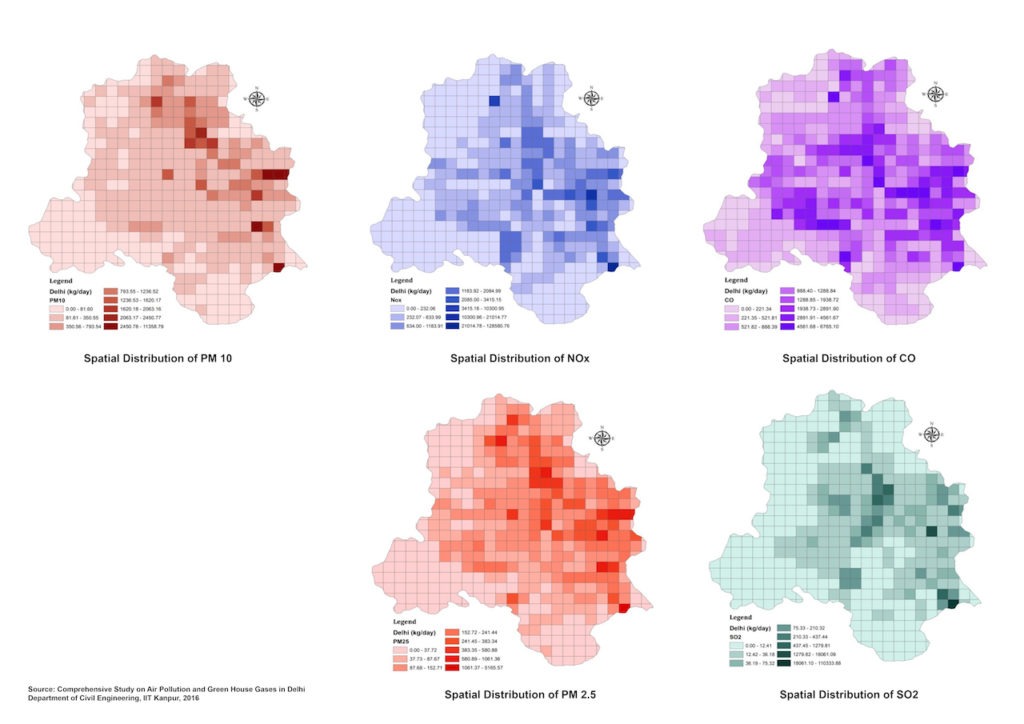
As a result, residents who have the luxury to stay home are doing so. Sales of air purifiers and masks have gone up, with the latter item becoming commonplace even before the onset of the Covid-19 pandemic.
While several different reasons lie at the root of this seasonal problem – primarily, the result of emissions from transport, industry, power generation, and stubble burning, as well as construction dust.
The problem is conflated by winter weather, when temperatures fall and wind speeds slow. These conditions create a temperature inversion, trapping fine particulates underneath a layer of warm air, and leaving nowhere for the smog to go. The unfavourable meteorological conditions can also be partly attributed to the fact that the terrain of the National Capital region – comprising New Delhi and the satellite town – is land locked, with the Himalayas on the other side. This traps the pollution that can’t escape easily.
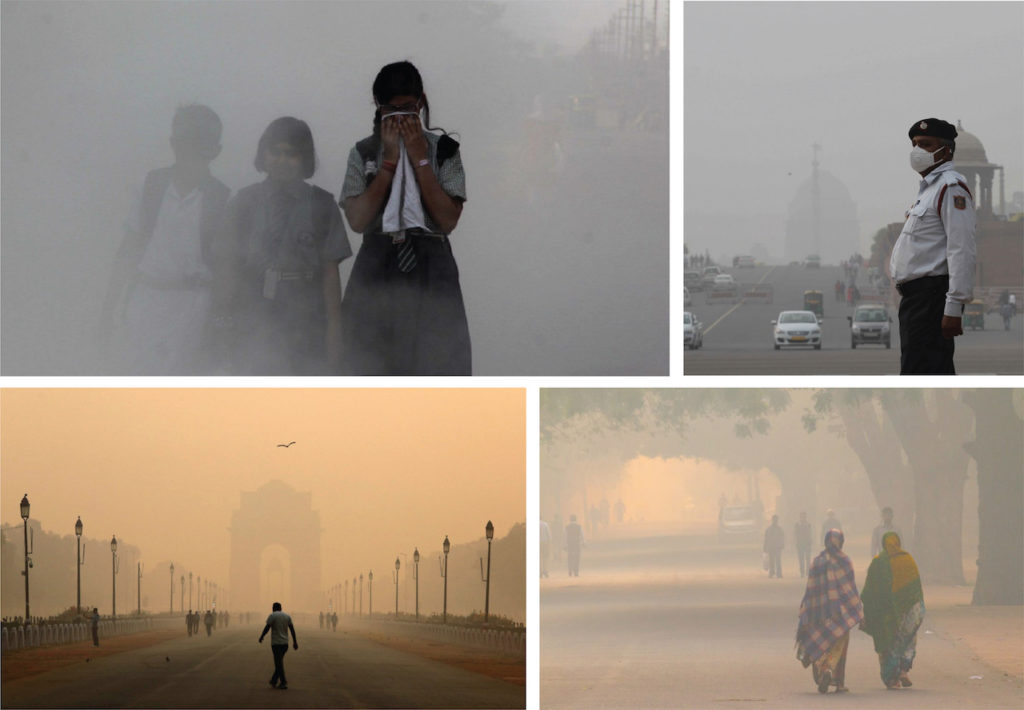
However, the pollution problem is not endemic to New Delhi alone; India is home to 22 of the top 30 most polluted cities in the world, according to a study in 2019 by Greenpeace and AirVisual.
DE51GN sat down with New Delhi- and Stuttgart-based Amit and Britta Knobel Gupta, co-founders of the prolific architecture practice, Studio Symbiosis, to find out what has exacerbated the pollution problem in the Indian capital over the past few years. While the couple divides their time between India and Germany, like most people, they have had to scuttle any travel plans since the pandemic upended all cross-border movements at the beginning of the year. In addition to several hotels, institutional, public and private projects across India, Nepal and Germany, one of the most significant projects undertaken by practice is that of developing Aura, the air-purifying towers proposed to address the crippling pollution in New Delhi.
Back in 2019, the practice created much interest among urban planners with their innovative solution – air-purifying towers – toward New Delhi’s perennial pollution problem that was the result of a non-profit study undertaken by the practice. Over the past year, the architect duo and their team have spent an enormous amount of time researching, designing, and fine-tuning their proposed air-purifying tower. Conceptualised in four variations – Aura Hive (60m towers along the city border), Aura Hotspot (18m tower within the city), Aura Velocity (mounted atop cars), and Aura Falcon (drone version).
DE51GN: Tell us about the Aura range of air-purifying systems. How did they come about? What’s the story behind its genesis?
Studio Symbiosis: We conceptualised it last year and since then we got a lot of feedback. It was also picked up by many international media outlets and even different countries, who are interested in the product such as Israel and some European countries, approached us. We have now created a prototype. This came about due to the persistently unliveable conditions in Delhi during the winter season. The annual tourist season used to be in these best months from November to March when the temperatures are low. But this period has now become unbreathable. You not only feel the pollution but you see it all around. You can’t even see the buildings around you. We were compelled to do something about it because we live here (at least part of the year) and it was affecting our day-to-day living. It was not a case of seeing something on the internet and wanting to capitalise on it. It was more of a reaction to what we were experiencing ourselves. That’s how Aura came into being.
We’re working on an eco-project – an 890-acre bio-diversity park – in Delhi. A such, we wanted to have a product to incorporate into it. We started looking around and found that there are similar products but when you go through their specification sheet, they are not very efficient. There are some companies in India that manufacture air purifiers.
There’s one company that has installed a 50m smog tower in Delhi’s All India Institutes of Medical Sciences (AIIMS), a group of autonomous government public medical colleges of higher education with nationwide campuses, but when we went to physically see it, we discovered a 300mm opening on both sides. I am not convinced this kind of system works. The data doesn’t seem to support it.
SOURCES OF POLLUTION
With the data as the reference point, we started developing Aura further. One of the major issues for us in Delhi – we did a city-specific study – is the pollution coming from stubble burning from the neighbouring states of Haryana and Punjab, where farmers burn the crops so they can plant new crops in the next season.

They lack proper machinery and equipment which leaves them with no choice but to engage in such practices. We started creating a study of the source of pollution – it’s coming from both outside the city but also from inside the city. We’re as much a part of the problem due to automobiles and factories.

In Delhi, we have lots of open roads and dust, construction, creating ground pollution. We have to consider both the external and internal factors. We also looked at other options before we started constructing these air purifying towers.
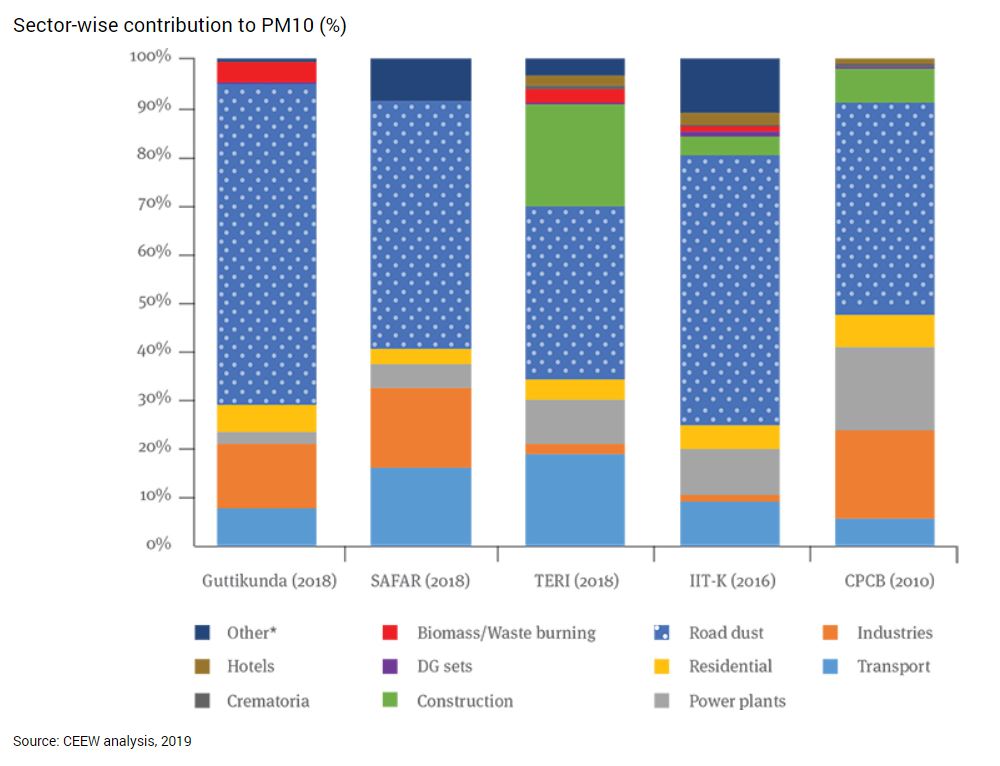
The pollution has only gotten worse in the past few years. They closed some power stations but that’s not enough. Even at an individual level, during winters, people on the streets burn logs of wood to keep warm. You can’t stop them or begrudge them for wanting to stay warm in the cold harsh winter season.
In China, they did cloud seeding for the Beijing Summer Olympics in 2008, not for pollution but to regulate the weather conditions during the Olympic Games. We investigated cloud seeding thoroughly. The problem is cloud seeding settles invisible particles of matter in the air. Water droplets cannot capture the fine PM 2.5 particulates. There are lots of components of air pollution: one is CO2, which plants can easily take care of.
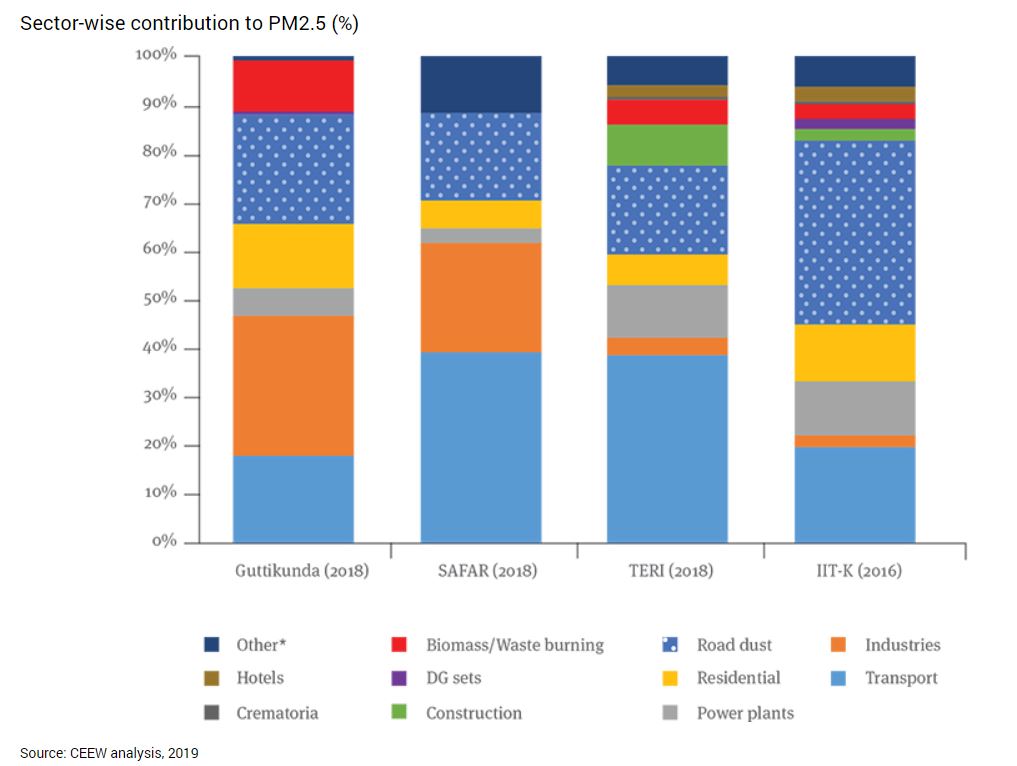
For example, in the eco-park that we are working on, 200,000 trees will be planted. The real problem is PM 2.5 which can penetrate lungs and damage them. The problem is so big and complex that nature itself cannot clean here. We need an active system to clean these fine particulate matters.
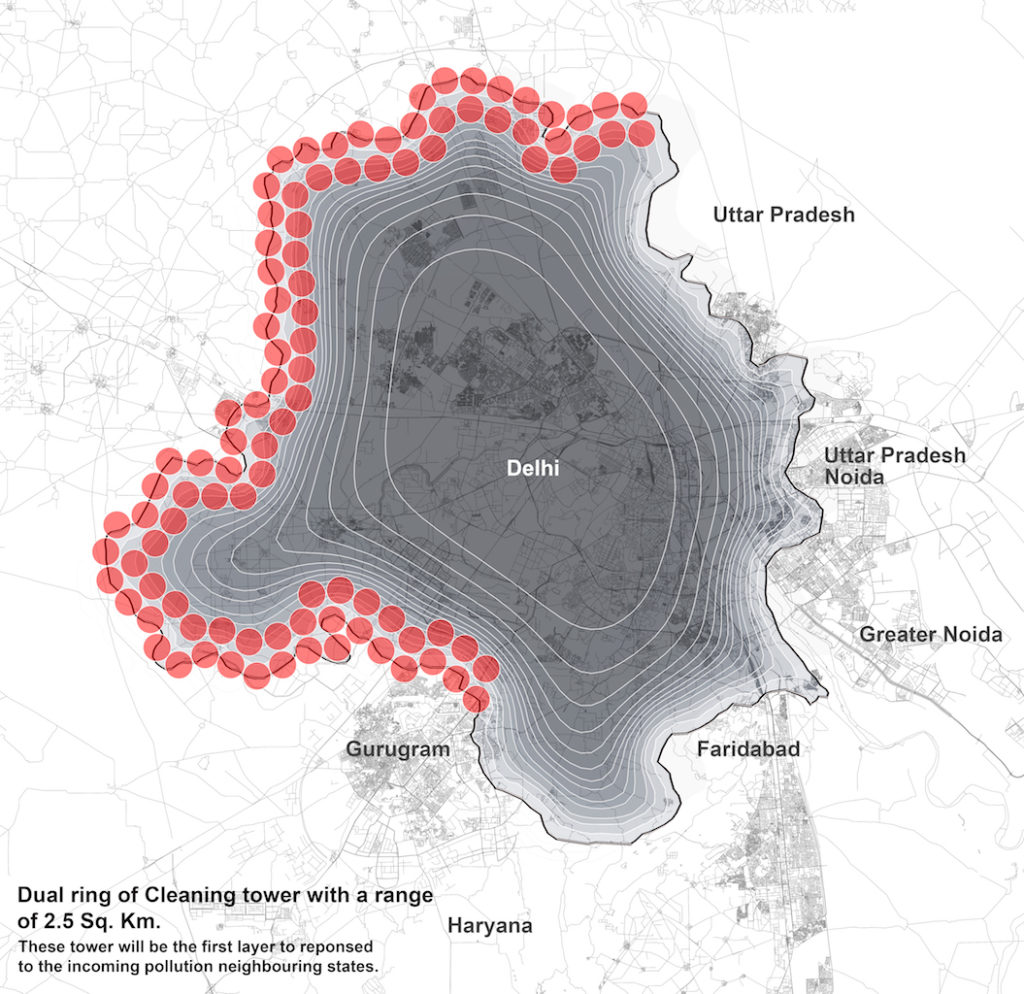
In Delhi, the Central Pollution Control Board, an Indian government statutory organisation that provides technical services to the Ministry of Environment and Forests, and promotes cleanliness of streams and wells in different areas of the states by prevention, control and abatement of water pollution, has tested a prototype from a company in Haryana state. It was essentially a 10m-long gun that would throw water into the air through a nozzle at the front. However, it didn’t seem to work. We realised that water is not the solution. Also by creating rain, we are actually playing with nature. We are not supposed to do that because the repercussions can be severe and you don’t know what can happen after that.
DE51GN: What challenges did you face while creating this air-purifying system?
Once we had dismissed the water-based solutions, that’s when the current Aura took shape. The biggest challenge in air-purifying towers is that they are based on the natural draft of air. There is a certain amount of wind that is generated within Aura or any cleaning tower that sucks the air, for that matter, and can create a mini hurricane effect and pull everything in.
The second study focused on how to use the natural draft of air and push it through the air-cleaning tower. We believe in research and learn from the past mistakes of others. A lot of these towers are uni-directional. So they pull from one side and push from the other side. But the problem arises because the air flow – speed and direction – keeps changing. When we checked the wind flow pattern of Delhi, we learnt that the air flow keeps changing not only throughout the year but throughout the day.
If you’ve one-directional entry and exit, it will not be effective. First of all, the efficiency is low because it’s based on natural air and second, the windflow keeps changing direction. It’s crucial to figure out how to tackle this challenge. So we came up with the concept of an air-wrap that has filters on all the levels. Whichever direction the air is coming from, it glides along the surface. We did a thorough analysis on the wind direction. At one point, we went into the jet turbine concept just to observe the compression and expansion phenomena. But then it began to turn into rocket science for us.
Finally, we decided to design it as an architectural form in terms of maximising the surface contact area, and reducing the wind drag. To achieve this, we turned to car manufacturers – to see how they design automobiles. If you see the streamline on a car, it’s designed to be efficient by reducing the wind drag. If you increase the drag when it comes into contact with the form, it becomes inefficient.
MAXIMUM SURFACE AREA AND MINIMUM WIND DRAG
Based on the two parameters of maximum surface area and minimum wind drag, inspired by aerodynamics, we set out to create the form. And then we started twisting the form so that the wind goes around the surface. First, we started with a cylinder and then we did the computational fluid analysis (CFA) analysis. Based on this analysis, we realised that by twisting the tower, we get more traction on the surface.
The form outside is bigger while narrow on the inside which enables the mechanism to accelerate the wind speed and distribute it evenly. The name of the tower – Aura – is inspired by the Greek Goddess of breeze. It also refers to purifying the aura of a person. This was the design part, followed by the technical part which was very crucial. We contacted three companies. One is a rather primordial company based in Delhi that makes air filters for various purposes. There was also one company in New Zealand. But we couldn’t use any of these available options as they are all untested and we didn’t have sufficient data to arrive at a fruitful conclusion.
We then contacted a German company that had already installed a similar purifying system in the Stuttgart City Centre. But it was unidirectional because of height restriction – the tower was only 3m high. It’s a valley so it doesn’t have the same topographical conditions as New Delhi. Since we also have an office in Stuttgart, it was easier for us to coordinate with them. We started using their system with our form and optimising it to suit our requirements. We started using the rotating box which follows the component behaviour.
FORM FOLLOWS FUNCTION FOLLOWS RESEARCH
With all the internal mechanisms in place, we started working on the facade. The cleaning tower needs a physical space to be installed in. This raises the question of dealing with prime real estate. In New Delhi’s Connaught Place, which is the capital’s Central Business District in the Lutyens-designed Delhi, commercial rentals are among the highest in the world. Now, the challenge was to address the real estate concerns. When we met the governor of Delhi, at that time, we had designed something that had the provision for traffic cops to stand inside it while regulating the traffic. It was becoming too high and the machine weight on top of the traffic cop was too much. It needed proper foundation and more infrastructure work. This was the first iteration of aura with a person standing below it.
But then the second challenge was that we couldn’t make it completely self-sustainable due to the solar panel issues and the space required for them. The area on top of any such machines is very little. The wattage that the fans require is too high in terms of offsetting the power by using solar power. We can offset it to a certain degree but not 100%.
So we decided to install them in the green roundabout spots which are quite common in Lutyens’ Delhi. These hotspots Solar panels can be installed in these areas and they already have some battery-powered lighting built into these roundabouts. This power source can be optimised for Aura as well.
The tower also becomes an urban installation. Right now, it might just be a reaction to the critical problem of pollution but 30 to 40 years from now, we wouldn’t want to be held responsible for putting an ugly object throughout the city.
Dutch architect Lars Spuybroek designed a sculpture, D-Tower, in the city of Doetinchem in Netherlands that detects the mood of the city – happy, sad colours change. It synthesised and captured the emotional wellbeing of the city’s residents. Invariably, such works become the creator’s legacy, for good or bad.

It also has the potential for some lighting elements based on themes and special occasions such as the country’s independence day but the glass element can be used only on part of it. For the most part, we are using fibre reinforced concrete because the weight of the system is very critical. If we were to use glass-reinforced concrete, it would become so heavy that the sub-structure won’t be able to take the load. We’re aiming for a plug-and-play structure. If we increase the cost of the outer skin, the cost of the sub-structure also increases, impacting the handling and the overall cost of the project.
THE VARIATIONS
We’re now at the optimisation stage. The tower has only two moulds which are one metre high. We’re still trying to resolve some issues with the bigger-sized versions of Aura. Initially, we had also proposed an 80m tower but when we did the CFA analysis in order to arrive at the pressure required to get the air in because the higher you go, we figured we would need to have more fans to get more speed because the surface contact area of the filter is larger. So if you don’t get enough air into the filter, it’s pointless to make a bigger tower.
We also studied a tower in Xian city in China’s Shaanxi province that was 3km radius. We studied it but we weren’t able to find any technical partner and any data to support whether it’s actually cleaning an area within a 3km radius. Another variation of Aura that we came up with to counter the low airspeed is Aura Velocity that sits atop cars.
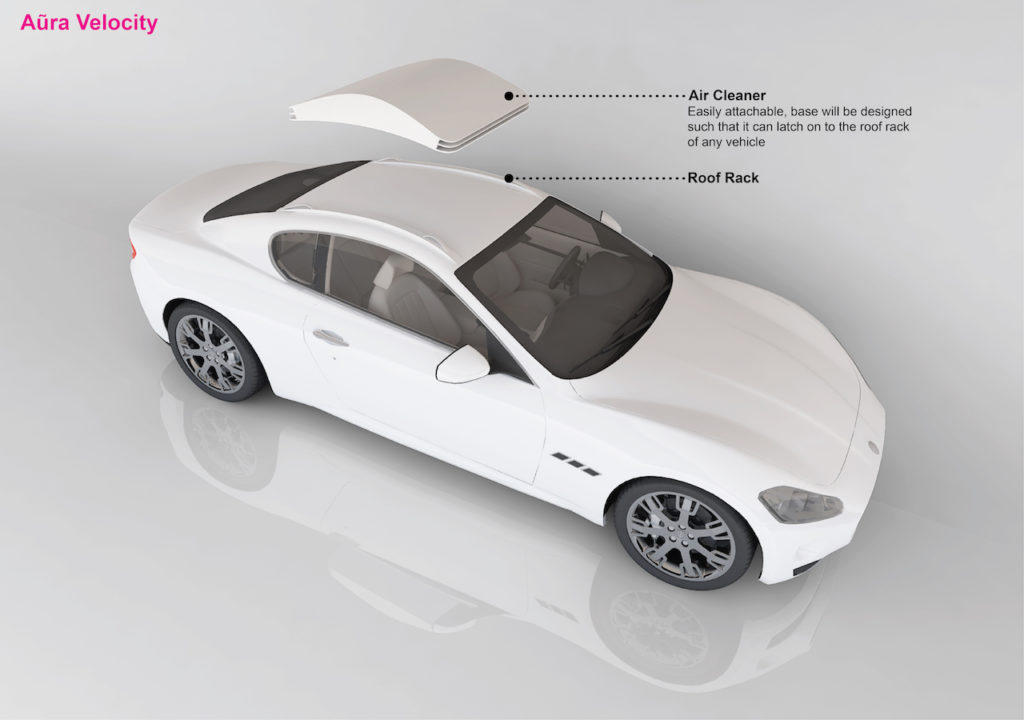
The air pressure over Delhi and the NCR is very low, which leads to low wind speed that, in turn, causes the pollution. The lower the wind speed, higher the pollution.
We figured Delhi has a huge car population and these cars are being driven around while creating pollution outside. They have air conditioners that only filter the air inside the car. With Aura Velocity, we could address this problem. It’s a bottom-up approach that could be perfect for a city like Delhi. However, there is plenty of bureaucracy at play here. How do you enforce the installation of such a system on all private vehicles? People might ask, “Who will pay for its maintenance?”
Amit Gupta and Britta Knobel Gupta, co-founders, Studio Symbiosis
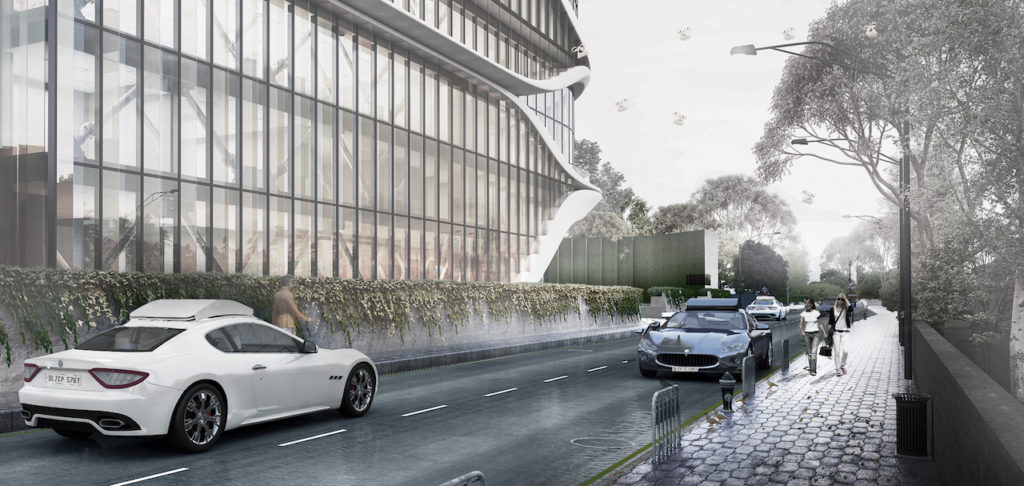
We feel that Velocity, which is a work in progress, has the potential to be the most successful model. We are also exploring a drone version, called the Aura Falcon, which is components nested within the cleaning towers that detach and move around the city guided by live updates of the pollution levels. They double up as CCTV cameras with an added feature of security. Right now, we want to manage the costing, system, and create something efficient and easy to install. We even received a query from Israel recently.
DE51GN: How do you perceive the effectiveness of this product?
The problem is that the pollution is being caused not just the stubble-burning by farmers, and industrial buildings – in fact, Delhi barely has any pollution-causing industries. The biggest problem is diesel being used as the source of energy to power up factories and industrial facilities. It’s not the cleanest source of energy.
DE51GN: When will Aura come to fruition?
Studio Symbiosis: We’re hoping to launch the pilot project in the next two to three months. We don’t have sufficient data yet to support the inner workings of the system. We’re hoping to get it off the ground during the ongoing winter season. We need to do more testing. We’re working on the outer shell now but the inner system is almost complete.
DE51GN: What’s the cost of manufacturing Aura?
Studio Symbiosis: The cost of this prototype is US$40 to 80k. There seems to be a lot of variation because there are a lot of different combinations being explored. We want to keep it affordable. Mass production will, of course, bring the cost down. It’s a single mould that repeats throughout the structure. Doing so will help us optimise the cost.
DE51GN: How effortless are the maintenance and repair works on these air-purifying systems going to be?
One of the problems with these air-purifying systems is the non-biodegradable plastic. It’s a dichotomy: on one hand, we are trying to purify the environment, while on the other hand, we are creating more waste materials. The plastic for the outer shell and the filters that we have used are bio-degradable. This was very important to us. The maintenance is easy. Every month, the filter can be removed and it’s easy to clean. Every six months, maintenance can take place once the smog phase is over. You don’t need special training to clean these filters.
The form rotates along with the filters. There are only two moulds in the sculptural form. We will have greenery integrated with it.
Easy assembly techniques and by changing the FRC, we have reduced the weight of the system. If you have to open up the machine because something went drastically wrong with the electronics inside, you can just unscrew the panels.
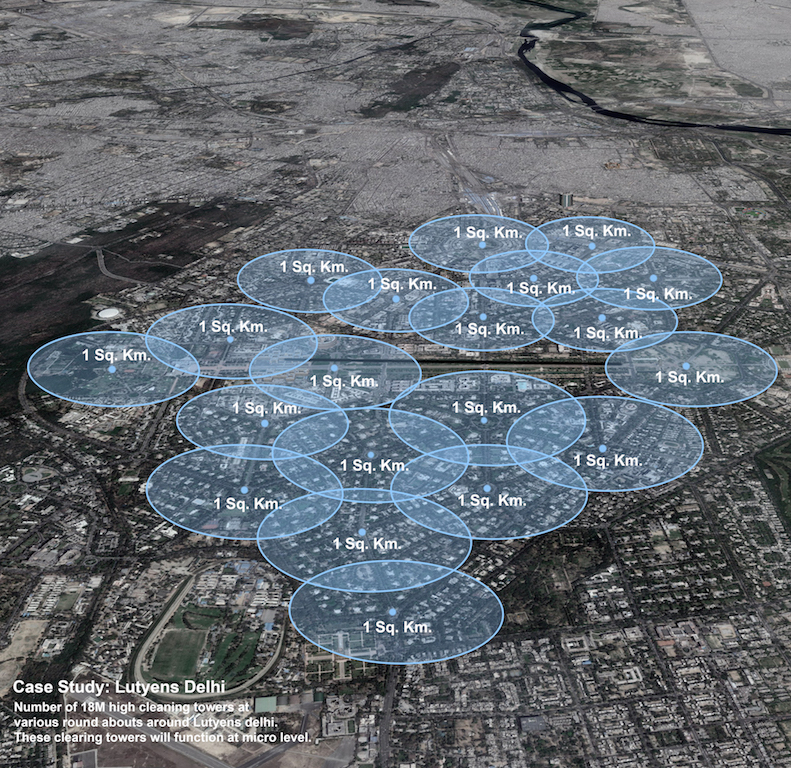
We did a study on the city hotspots study and identified all the areas. Based on the obstructions, buildings, wind speed, and the CFA analysis, we can determine how many towers will be required. The city of Delhi will require at least 3,000 pollution towers and unless you deploy them on such a scale, over a period of five to 10 years, the solution will not work.
COMMITTING TO POLLUTION CONTROL AT SOURCE
“The best way is to stop pollution at the ground level. All these are countermeasures. The source has to be tackled. Our sincere hope is that if the city can stop the pollution at the source level, we don’t have to install even a single unit of Aura in the city.”
Amit Gupta, co-founder, Studio Symbiosis
A lot of it can be tackled if the government helped the farmers with the machinery to clear their farms. They are already spending so much money to tackle pollution. But it’s a small part of the problem. It’s a policy-level matter. For example, the neighbouring states of Punjab and Haryana, with big agricultural farmlands, do not view their interests in the same way as the New Delhi state authorities do. When the chief minister of New Delhi said that we will not let anyone burn stubble in Haryana, the latter chief minister retorted that he is not going to stop anyone from burning the stubble. It has now turned into a political topic of contention.
Even though compresses natural gas (CNG) arrived in New Delhi about 20 years ago, and all the public buses as well as taxis here run on CNG. But private cars run on diesel or petrol. Population doesn’t help either – there are 20 million people in official data. Unofficially, it could be 25 to 30 million, including the satellite towns. Even though there is metro train transport in Delhi, and the authorities are trying, the city is finding it hard to cope with the challenges of pollution and population.
Delhi is an old city. It has had an organic growth like Mumbai. The only solution in Delhi is to build vertically. The live-work relationship has to be explored for some of these solutions to work effectively. On the other hand, Noida in the neighbouring state of UP is a fairly new and planned city. We are working on two 1,500-acre masterplans in UP. According to the local guidelines, the project scope takes into account 15% green area, 15% waterbodies, as well as the segregation of vehicular and pedestrian movements.
In Gurgaon, yet another satellite town, with a big concentration of multinational companies, developers bought land from the farmers, and built shopping malls and other commercial establishments. There, urban planning and design came into play long after the city had already been built. There are guidelines in place but these cities are already so built up that the guidelines do not work, and the enforcement is not strict either. In a city-state like Singapore, there are strict guidelines that need to be followed.
DE51GN: Are there any financial incentives for developers to build more sustainably in India?
Studio Symbiosis: In Gurgaon, for example, the developer gets an incentive of an extra 5% Floor Space Index (FSI) which is the ratio of the built-up space on a plot to the area if they build a green building.
Aura: Breathing Lungs of the City project details:
Architects: Studio Symbiosis Architects (www.studio-symbiosis.com)
Design: Amit Gupta and Britta Knobel Gupta
Team: Amit Agrawal, Kartik Misra, Sonal Dongre Jain, Dewesh Agrawal, Chinmay Chowdhary, Mandeep Chaudhary , Pallav Chaudhary, Keshav Sapra.
All photos and renderings courtesy: Studio Symbiosis
You might also like:
Studio Symbiosis to design Perfume Park and Museum in India’s Kannauj city

